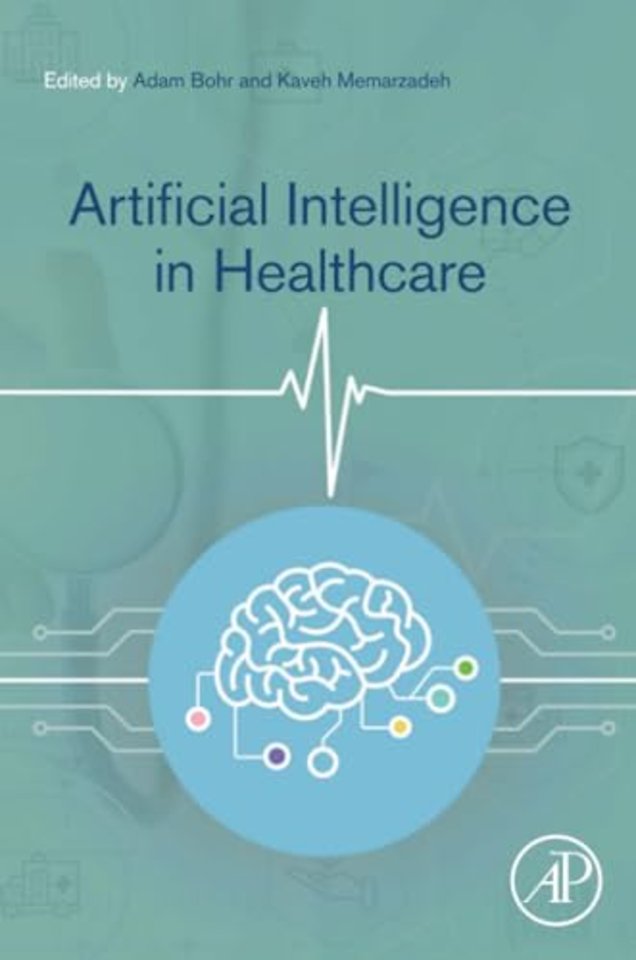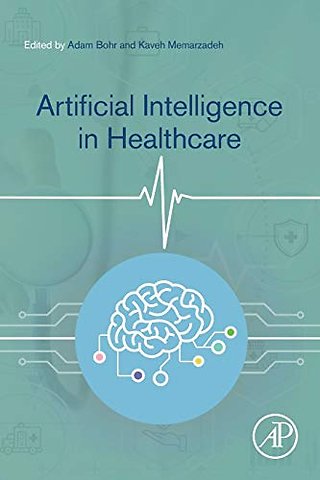<p>List of contributors xi</p> <p>About the editors xiii</p> <p>Biographies xv</p> <p>Preface xxi</p> <p>Introduction xxiii</p> <p>1. Current healthcare, big data, and machine learning 1</p> <p>Adam Bohr and Kaveh Memarzadeh</p> <p>1.1 Current healthcare practice 1</p> <p>1.2 Value-based treatments and healthcare services 5</p> <p>1.3 Increasing data volumes in healthcare 10</p> <p>1.4 Analytics of healthcare data (machine learning and deep learning) 16</p> <p>1.5 Conclusions/summary 21</p> <p>References 22</p> <p>2. The rise of artificial intelligence in healthcare applications 25</p> <p>Adam Bohr and Kaveh Memarzadeh</p> <p>2.1 The new age of healthcare 25</p> <p>2.2 Precision medicine 28</p> <p>2.3 Artificial intelligence and medical visualization 33</p> <p>2.4 Intelligent personal health records 38</p> <p>2.5 Robotics and artificial intelligence-powered devices 43</p> <p>2.6 Ambient assisted living 46</p> <p>2.7 The artificial intelligence can see you now 50</p> <p>References 57</p> <p>3. Drug discovery and molecular modeling using artificial intelligence 61</p> <p>Henrik Bohr</p> <p>3.1 Introduction. The scope of artificial intelligence in drug discovery 61</p> <p>3.2 Various types of machine learning in artificial intelligence 64</p> <p>3.3 Molecular modeling and databases in artificial intelligence for drug</p> <p>molecules 70</p> <p>3.4 Computational mechanics ML methods in molecular modeling 72</p> <p>3.5 Drug characterization using isopotential surfaces 74</p> <p>3.6 Drug design for neuroreceptors using artificial neural network techniques 75</p> <p>3.7 Specific use of deep learning in drug design 78</p> <p>3.8 Possible future artificial intelligence development in drug design and</p> <p>development 80</p> <p>References 81</p> <p>4. Applications of artificial intelligence in drug delivery and pharmaceutical development 85</p> <p>Stefano Colombo</p> <p>4.1 The evolving pharmaceutical field 85</p> <p>4.2 Drug delivery and nanotechnology 89</p> <p>4.3 Quality-by-design R&D 92</p> <p>4.4 Artificial intelligence in drug delivery modeling 95</p> <p>4.5 Artificial intelligence application in pharmaceutical product R&D 98</p> <p>4.6 Landscape of AI implementation in the drug delivery industry 109</p> <p>4.7 Conclusion: the way forward 110</p> <p>References 111</p> <p>5. Cancer diagnostics and treatment decisions using artificial intelligence 117</p> <p>Reza Mirnezami</p> <p>5.1 Background 117</p> <p>5.2 Artificial intelligence, machine learning, and deep learning in cancer 119</p> <p>5.3 Artificial intelligence to determine cancer susceptibility 122</p> <p>5.4 Artificial intelligence for enhanced cancer diagnosis and staging 125</p> <p>5.5 Artificial intelligence to predict cancer treatment response 127</p> <p>5.6 Artificial intelligence to predict cancer recurrence and survival 130</p> <p>5.7 Artificial intelligence for personalized cancer pharmacotherapy 133</p> <p>5.8 How will artificial intelligence affect ethical practices and patients? 136</p> <p>5.9 Concluding remarks 137</p> <p>References 139</p> <p>6. Artificial intelligence for medical imaging 143</p> <p>Khanhvi Tran, Johan Peter Bøtker, Arash Aframian and Kaveh Memarzadeh</p> <p>6.1 Introduction 143</p> <p>6.2 Outputs of artificial intelligence in radiology/medical imaging 144</p> <p>6.3 Using artificial intelligence in radiology and overcoming its hurdles 146</p> <p>6.4 X-rays and artificial intelligence in medical imaging—case 1 (Zebra medical</p> <p>vision) 151</p> <p>6.5 Ultrasound and artificial intelligence in medical imaging—case 2</p> <p>(Butterfly iQ) 156</p> <p>6.6 Application of artificial intelligence in medical imaging—case 3 (Arterys) 158</p> <p>6.7 Perspectives 160</p> <p>References 161</p> <p>7. Medical devices and artificial intelligence 163</p> <p>Arash Aframian, Farhad Iranpour and Justin Cobb</p> <p>7.1 Introduction 163</p> <p>7.2 The development of artificial intelligence in medical devices 163</p> <p>7.3 Limitations of artificial intelligence in medical devices 171</p> <p>7.4 The future frontiers of artificial intelligence in medical devices 172</p> <p>References 174</p> <p>8. Artificial intelligence assisted surgery 179</p> <p>Elan Witkowski and Thomas Ward</p> <p>8.1 Introduction 179</p> <p>8.2 Preoperative 179</p> <p>8.3 Intraoperative 185</p> <p>8.4 Postoperative 193</p> <p>8.5 Conclusion 196</p> <p>References 197</p> <p>Further reading 202</p> <p>9. Remote patient monitoring using artificial intelligence 203</p> <p>Zineb Jeddi and Adam Bohr</p> <p>9.1 Introduction to remote patient monitoring 203</p> <p>9.2 Deploying patient monitoring 205</p> <p>9.3 The role of artificial intelligence in remote patient monitoring 209</p> <p>9.4 Diabetes prediction and monitoring using artificial intelligence 219</p> <p>9.5 Cardiac monitoring using artificial intelligence 221</p> <p>9.6 Neural applications of artificial intelligence and remote patient</p> <p>monitoring 224</p> <p>9.7 Conclusions 229</p> <p>References 230</p> <p>10. Security, privacy, and information-sharing aspects of healthcare</p> <p>artificial intelligence 235</p> <p>Jakub P. Hlávka</p> <p>10.1 Introduction to digital security and privacy 235</p> <p>10.2 Security and privacy concerns in healthcare artificial intelligence 237</p> <p>10.3 Artificial intelligence’s risks and opportunities for data privacy 245</p> <p>10.4 Addressing threats to health systems and data in the artificial</p> <p>intelligence age 253</p> <p>10.5 Defining optimal responses to security, privacy, and information-sharing</p> <p>challenges in healthcare artificial intelligence 255</p> <p>10.6 Conclusions 263</p> <p>Acknowledgements 264</p> <p>References 265</p> <p>11. The impact of artificial intelligence on healthcare insurances 271</p> <p>Rajeev Dutt</p> <p>11.1 Overview of the global health insurance industry 271</p> <p>11.2 Key challenges facing the health insurance industry 272</p> <p>11.3 The application of artificial intelligence in the health insurance industry 274</p> <p>11.4 Case studies 280</p> <p>11.5 Moral, ethical, and regulatory concerns regarding the use of artificial</p> <p>intelligence 280</p> <p>11.6 The limitations of artificial intelligence 282</p> <p>11.7 The future of artificial intelligence in the health insurance industry 289</p> <p>References 290</p> <p>12. Ethical and legal challenges of artificial intelligence-driven</p> <p>healthcare 295</p> <p>Sara Gerke, Timo Minssen and Glenn Cohen</p> <p>12.1 Understanding “artificial intelligence 296</p> <p>12.2 Trends and strategies 296</p> <p>12.3 Ethical challenges 300</p> <p>12.4 Legal challenges 306</p> <p>12.5 Conclusion 327</p> <p>Acknowledgements 328</p> <p>References 329</p> <p>Concluding remarks 337</p> <p>Index 339</p>

